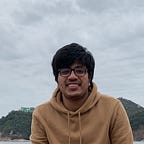The wildest expedition yet, with amazing engineering and science.
As a computer science student, one might imagine a workplace that looks like a room on land. Yes, those keywords are important, because this week, my workplace was, at most times, not on land and definitely not in rooms full of computers. There is so much I wish to share, that I have seen and learned, however, most importantly, I wish to show off what simple engineering is capable of achieving given there is a motivation to make a positive impact in this world.
Well, I may have exaggerated a bit when I mentioned that my workplace was not on land. However, there is some truth in that statement. A group of us, engineering and science students, took up this project in El Nido, Philippines to have a closer look at a magnificent creature in the ocean, the manta ray.
We spent a week living in Sibaltan, and I do not remember living in a place more beautiful. I will leave for you to judge my claim from the picture below, which is the view I had every morning, from my tent.
It’s unbelievably satisfying. I would have posted this article while I was there, but there was no connectivity. I would have typed it on my laptop there, but I wasn’t sure if I would be able to charge my laptop or my phone. Yet, it was unbelievably satisfying and I could go on about it and never manage to finish.
This, however, wasn’t remotely the highlight of this expedition. We were there in the first place to explore the oceans that is visible in the pictures above, and beyond.
The Project
Our project was to solve a fairly simple problem. Alessandro Ponzo, a National Geographic explorer, has a little hobby of his own to observe the manta rays. He uses cameras under the water to observe these magnificent creatures from as close as possible. However, the problem here is the need to dive every now and then to get the camera underwater, and later take it out to save all the pictures. If you don’t already see the problem, there is only that much time a camera can record until the memory or the batteries run out. Hence, we made it our mission to solve these problems for him.
We used a Raspberry Pi, a camera, a few battery packs and a water-proof container tube to build a compact device that can work for a lot longer than the current system in terms of battery life and memory capacity, and, at the same time, take pictures good enough for making meaningful observations. We chose to use a mobile application to configure the device to make it more user-friendly. The device asks from the user to provide a schedule of the time periods that it should make recordings or take pictures. Then, the device is placed underwater and it’s ready to do its job.
We conducted our tests on March 4th, 2019 and I hate it that I cannot explain my emotional attachment to this event. It is one thing to see a manta ray in a picture, but we got not one, but pictures of three different manta rays using our camera. I think it was an accomplishment for the team which we had hoped for in our dreams but had not expected for it to come true.
Finally
There are so many real-world problems that real people in this world face. So many of these problems have simple solutions. Hence, we need projects like these. I don’t know how much of a difference this is going to make in the world, however, it is one problem less to worry about for someone in the world. This is what I feel happy about.
This experience broadens my view of this world a lot more than before. I had the chance to snorkel around and see the depths. I had the chance to free dive but also code in the middle of the ocean. I had the chance to meet amazing people and I happened to do something cool for one of them. So I guess engineering is a lot more than math and boring homework if given a chance.
I have to thank Alessandro Ponzo for the best ever insight into the ocean. And I have to thank the team and HKU for making this happen. I think I claim this confidently that it was by far, one of the most adventurous expeditions I have had. However, it doesn’t stop here.
Feel free to write me an email at utkarsh867@gmail.com if you are curious to know more about the project. I hope to keep this article updated with more links and pictures from the project as they are ready.
Until next time!
